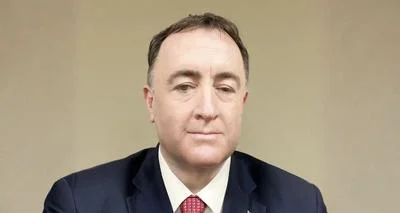Loyola Health System issued the following announcement on July 10.
MAYWOOD, IL – After suffering a severe cervical spinal cord injury from a bad fall at work, Scott McConnell had little function remaining in his hands and arms.
Loyola Medicine orthopaedic surgeon Michael Bednar, MD, was able to restore key functions with a series of operations called tendon transfers.
Mr. McConnell now can open his fingers much more than he could before, and he can close them in a tight grip. He can pinch with his thumb and extend his arms outward. He is able to more easily perform everyday tasks such as grasping a cup, brushing his teeth and using his cell phone.
"I have a lot more ability in both my hands and my arms," Mr. McConnell said.
Depending on the extent of the spinal cord injury, tendon transfers can enable a patient to grasp objects, open the hand, pinch the thumb and straighten the elbow.
In a tendon transfer, muscles that still work are redirected to do the jobs of muscles that are paralyzed. For example, the surgeon may detach one of the working muscles that flexes the elbow and reattach it to a nonworking muscle that flexes the thumb.
The number of functioning muscles a patient has will determine what tendon transfers the surgeon will perform. The more working muscles available for transfer, the more functions can be restored. Tendon transfers typically involve two surgeries on each arm, performed three months apart. Arms are done one at a time. During rehabilitation with a hand specialist, patients learn how to use the transferred muscles.
Dr. Bednar has performed tendon transfers on about 75 patients and is among the most skilled and experienced surgeons in the country doing the procedure.
"Performing tendon transfers on patients with cervical spinal cord injuries requires a team approach," Dr. Bednar said. "A multidisciplinary team works with the surgeon to determine who is an appropriate candidate for surgery. The team then helps the patient through the surgeries and rehabilitation, thereby ensuring maximum benefit from the procedures."
Patients who potentially can benefit the most from tendon transfers have spinal cord injuries in the C5-C8 cervical nerves in the lower neck. Mr. McConnell's injury was C5-C6.
"These are the most satisfying patients with whom I get to work," Dr. Bednar said. "To do the operation and have them activate a muscle for the first time since their injury, and see the look in their eyes and their face light up when they realize the function is back, is one of the most rewarding things I get to do as a surgeon."
In addition to performing tendon transfers for spinal cord injuries, Dr. Bednar performs tendon transfer procedures to treat peripheral nerve injuries at Loyola's Peripheral Nerve Center.
Original source can be found here.

Source: Loyola Health System





 Alerts Sign-up
Alerts Sign-up